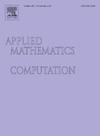衍生品定价的SABR和均值回归随机波动率统一模型
IF 3.5
2区 数学
Q1 MATHEMATICS, APPLIED
引用次数: 0
摘要
由于隐含波动率公式相当简单,SABR模型被金融行业的从业人员广泛使用,但它无法捕捉到波动率的均值回归性质。本文提出了一种将SABR波动率和均值回归随机波动率统一起来的定价衍生品的随机局部波动率模型。将渐近性与Mellin变换方法相结合,得到了一个卷积形式的显式定价公式。该公式允许我们以单积分计算(梅林卷积)来计算导数价格,而不是二重积分。此外,我们获得了一个封闭形式的定价公式,可以通过在合理的实际情况下使用Black-Scholes衍生品价格的三个希腊式(Delta, Gamma和Speed)来计算。通过蒙特卡罗仿真验证了推导公式的准确性。通过对外汇期权的实证分析证明了公式的有效性,因为将均值回归波动率特征纳入SABR模型有助于通过再现隐含波动率的u型结构将模型校准为真实的市场工具。本文章由计算机程序翻译,如有差异,请以英文原文为准。
A unified model of SABR and mean-reverting stochastic volatility for derivative pricing
The SABR model is popularly used by practitioners in the financial industry due to a fairly simple implied volatility formula but it wouldn't capture the mean reverting nature of the volatility as a drawback. This paper proposes a stochastic-local volatility model that unifies SABR volatility and mean reverting stochastic volatility for pricing derivatives. We obtain an explicit pricing formula in convolution form through the combination of asymptotics and the Mellin transform method. The formula allows us to compute the derivative price in terms of a single integral calculation (Mellin convolution) instead of a double integral. Further, we obtain a closed-form pricing formula that can be calculated by using the three Greeks (Delta, Gamma, and Speed) of the Black-Scholes derivative price in a reasonably practical situation. The accuracy of the derived formula is tested through Monte Carlo simulation. The validity of the formula is demonstrated through an empirical analysis of a foreign exchange option, as incorporating a mean-reverting volatility feature into the SABR model aids in calibrating the model to real market instruments by reproducing the U-shaped structure of the implied volatility.
求助全文
通过发布文献求助,成功后即可免费获取论文全文。
去求助
来源期刊
CiteScore
7.90
自引率
10.00%
发文量
755
审稿时长
36 days
期刊介绍:
Applied Mathematics and Computation addresses work at the interface between applied mathematics, numerical computation, and applications of systems – oriented ideas to the physical, biological, social, and behavioral sciences, and emphasizes papers of a computational nature focusing on new algorithms, their analysis and numerical results.
In addition to presenting research papers, Applied Mathematics and Computation publishes review articles and single–topics issues.

 求助内容:
求助内容: 应助结果提醒方式:
应助结果提醒方式:


